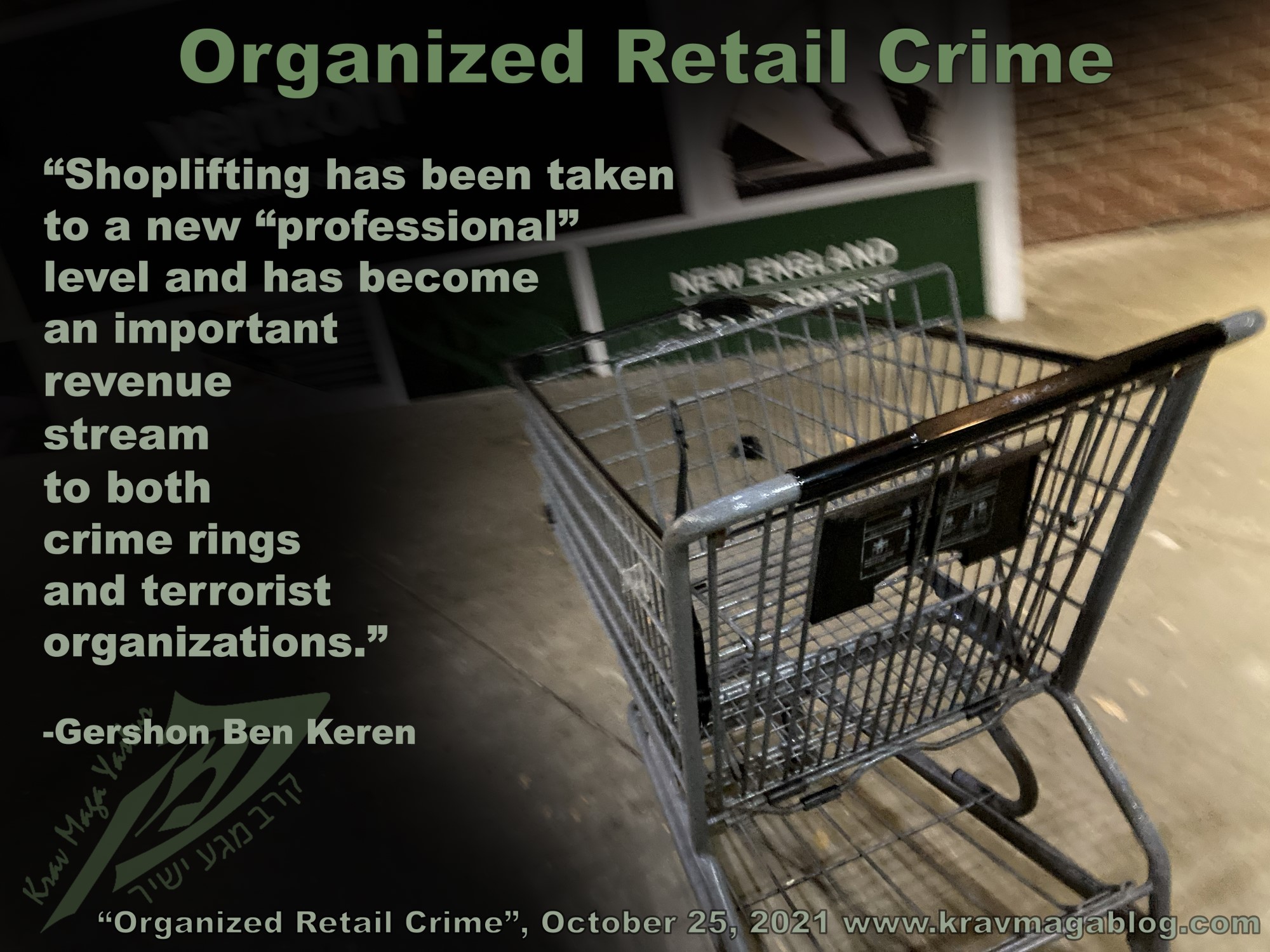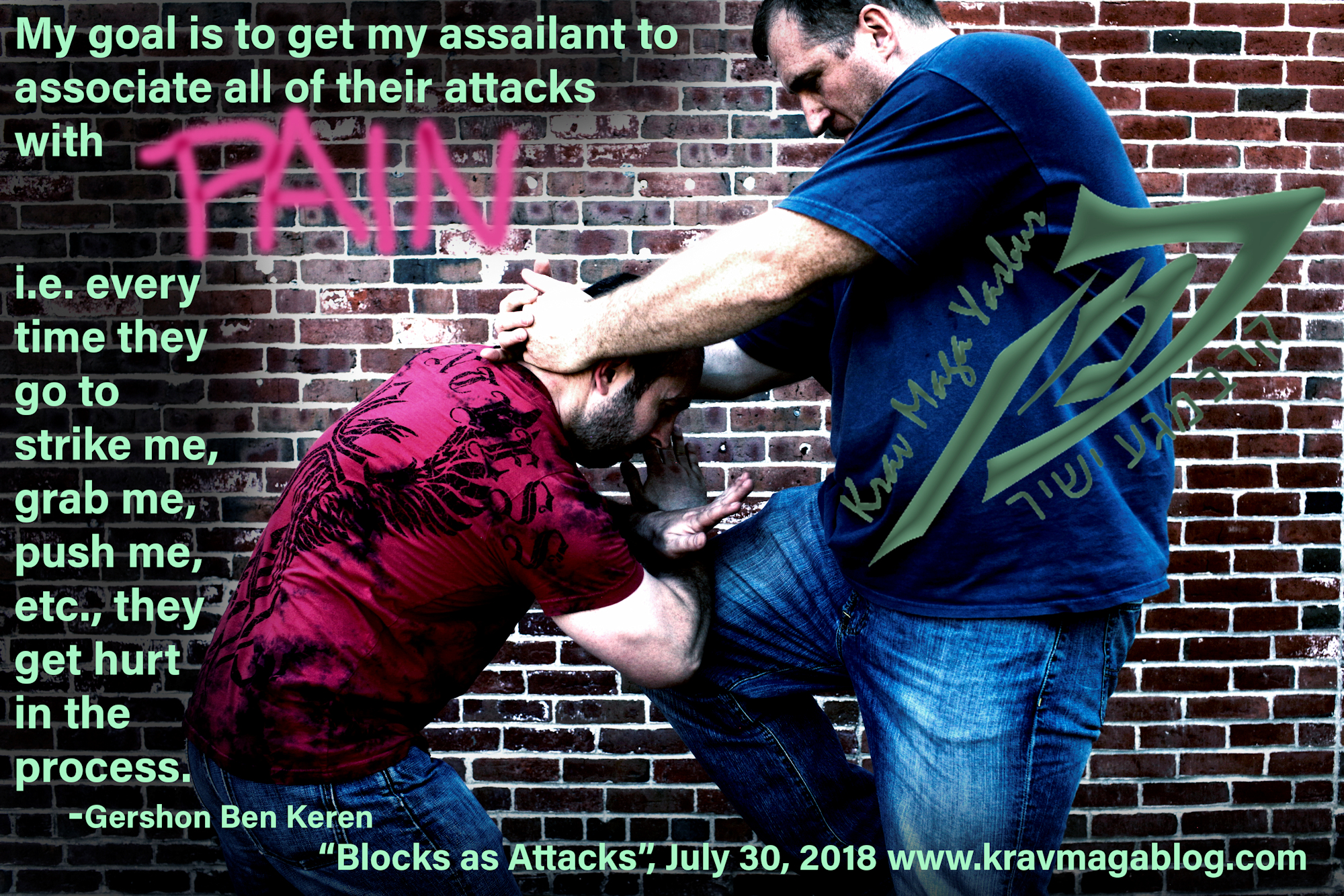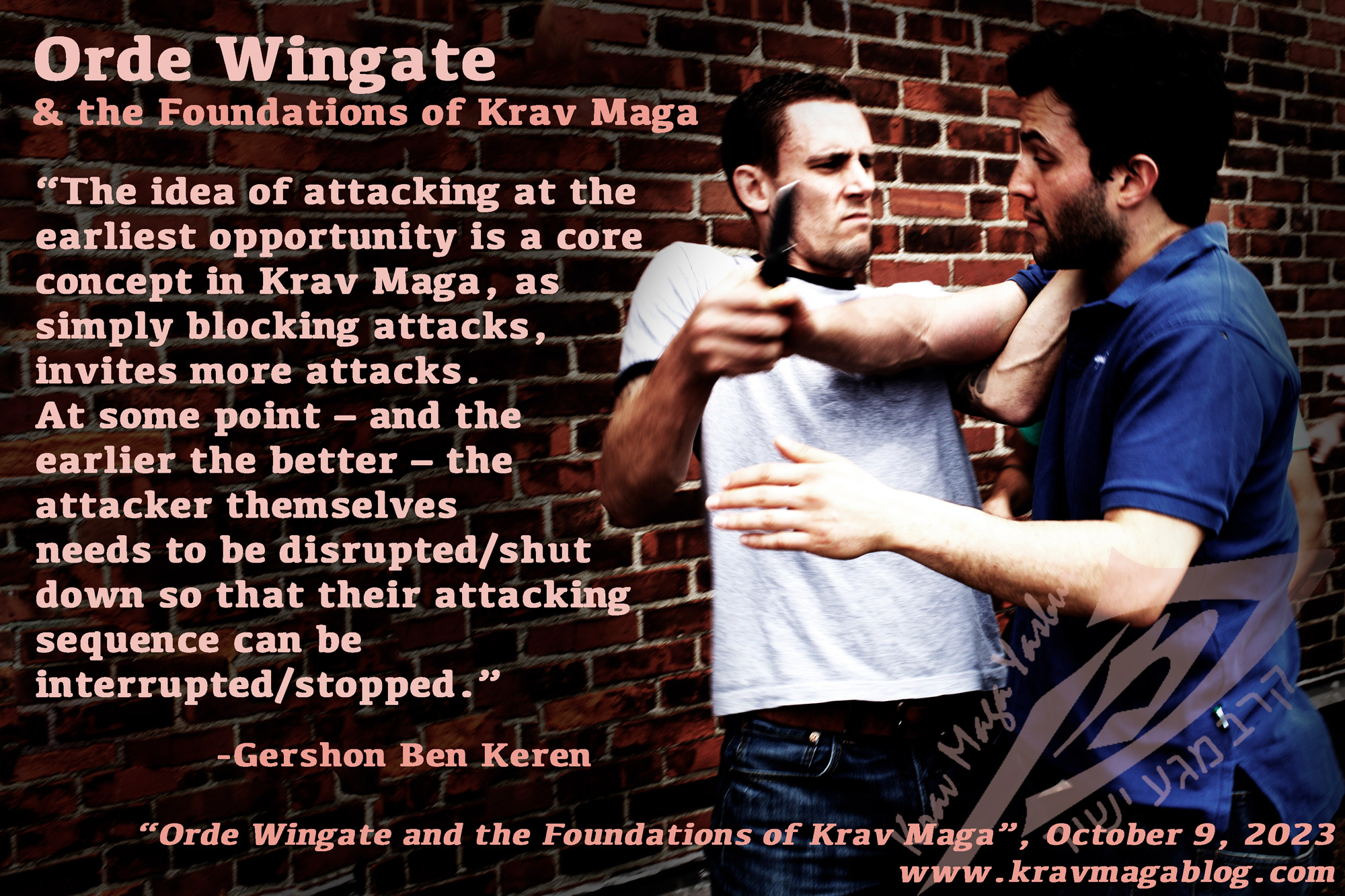Orde Wingate & The Foundations of Krav Maga, is an article written by Gershon Ben Keren, a 5th Degree Black Belt in Krav Maga, who teaches Krav Maga in Boston, MA. He has also authored three Amazon best-Selling Books on Krav Maga.
Like everything, Krav Maga was not created or developed in a vacuum. Whilst Imi Lichtenfeld is credited with founding the system, he could also be looked on as a curator of many people’s experiences and ideas; a person who brought these things together, not necessarily as a “system” but as an “approach” to self-defense and fighting. A system is something that is defined by boundaries, and is limited, whereas an “approach” is something which is much broader and allows for things to develop in many different directions. A system is rigid, whereas an approach is fluid, and allows for development and evolution. This is why Krav Maga can adapt and change as threats and dangers modernize themselves e.g., with long barrel weapon disarms developed in the 1940’s it was possible to grab and keep hold of the barrel of a rifle/carbine, something not possible with a modern weapon that heats up too quickly. To fully understand how Krav Maga came to be, and continues to be, it is necessary to understand the environment in which it was first developed, and some of the individuals who may not have necessarily directly influenced its creation/development, but provided significant background to the Israeli approach to combat and fighting. One such individual is Orde Wingate, after whom the Wingate Institute in Israel is named. In this article, I want to take a quick look at how Orde Wingate changed the Kibbutzim – the Jewish farmers/settlers in then Palestine – from being defensively minded, to individuals who acted offensively, and took the fight to their aggressors, rather than waiting to respond etc. This is a key concept within the Krav Maga approach i.e., attack must follow defense at the earliest opportunity, or be pre-emptive.
When Orde Wingate - assigned as an intelligence officer - arrived in then British-controlled Palestine in September of 1936, he found himself dealing with the “Great Arab Revolt” (something that lasted for another three years). The revolt was an uprising of Palestinian Arabs who were protesting against British rule, and the presence of Jewish communities in Palestine. It was comprised of strikes, riots, and acts of civil disobedience and terrorism etc. It also directly targeted Jewish settlers and Kibbutzim with acts of violence. A Kibbutz is traditionally an agricultural community/farm, where members share in the work for the benefit of the community, rather than for the individual. Wingate discovered that, often during the night, Arab guerrilla groups would attack these sometimes-isolated communities with small arms fire, remaining at a distance, which made it difficult for members to engage and defend themselves. Wingate, who was known for his unconventional strategic thinking, proposed that the best solution to dealing with such attacks – along with attacks to British infrastructure and resources – was to seek out and proactively engage with these groups, thereby preventing the attacks from being initiated. He proposed that groups of Jewish settlers, led by British Officers, should go out in the night to disrupt the Arab guerrilla groups, that were operating in Palestine. In 1938, the British command agreed to the idea, and the Special Night Squads were formed. These primarily comprised of members of the Haganah, the Jewish defense force that was working towards establishing the state of Israel; something that Wingate himself believed in. Wingate embodied and put into practice the line from the Talmud (a compilation of Jewish law, and commentaries on the Hebrew Bible), “If someone comes to kill you, rise up and kill them first.” The Special Night Squads, introduced the Jewish Settlers to the benefits of striking first, and initiating the attack, rather than waiting and responding etc. Moshe Dayan (who was Minister of Defense for Israel during the Six Day War – where Israel preemptively attacked the surrounding Arab Nations as they were preparing for their own attack on Israel), once said of Orde Wingate, “He taught us everything we know.”
The idea of attacking at the earliest opportunity is a core concept in Krav Maga, as simply blocking attacks, invites more attacks. At some point – and the earlier the better – the attacker themselves needs to be disrupted/shut down so that their attacking sequence can be interrupted/stopped. If possible, this should be done pre-emptively before an aggressor even launches their first attack, and most western legal systems allow this. Battery, is the act of “unwanted touching” and assault is the phase that precedes it i.e., when a person is in a position to engage in “unwanted touching”, which could be to grab, punch, or push you etc. The touch does not have to potentially cause pain or injury, it simply has to be unwanted e.g., if someone was to put their hand on a woman’s thigh, and its unwanted and deemed aggressive, that would suffice. Whilst a person who is in a position to potentially commit battery, fulfills one of the requirements of assault, there is a second: the person who may potentially be “touched” must fear for their safety. Only when this second part is present is an assault committed. In a crowded bar or pub there may be many people who are in a position where they could touch us, however it’s only when one of them gives us a reason to fear for our safety that we can make the claim that we are being assaulted. At this stage, we are entitled to defend ourselves i.e., attack pre-emptively. Obviously, we need for legal reasons to be able to demonstrate why we feared for our safety, rather than just say we did, however we don’t have to actually wait to be attacked before we defend ourselves.
The Special Night Squads (SNS) gave the Jewish settlers access to Orde Wingate’s unorthodox methods of combat, and his philosophy of pre-emption and attacking at the earliest opportunity in order to disrupt the enemy; a lesson Moshe Dayan (who served in the SNS) took and applied when initiating the Six-Day/June war, which saw the Egyptian air force largely destroyed on the ground with a pre-emptive air-strike. Many other members of the Haganah, served in the Palestine Police Force, using the training they received to educate themselves about tactics and the use of weapons etc. All of this to some degree had an influence on training and tactics and set the background for the development of what became referred to and known as Krav Maga.
0 COMMENTS















